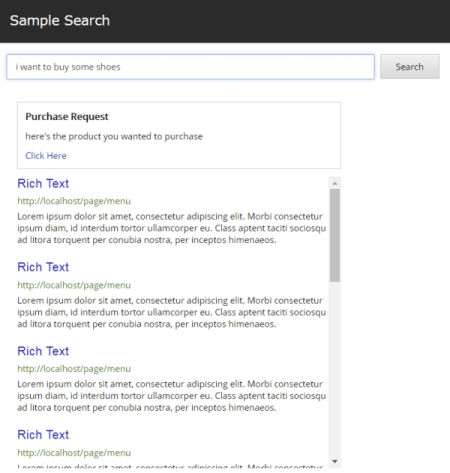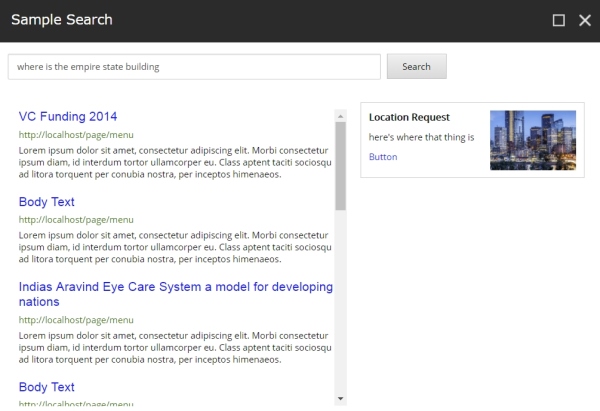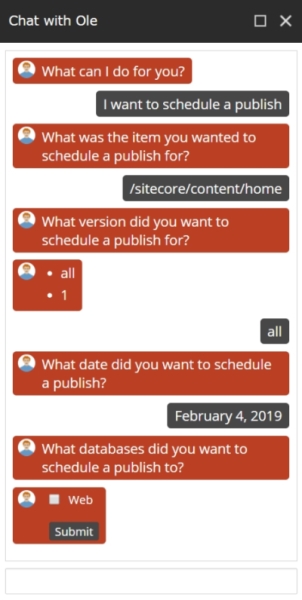Machine Learning-Enabled Chatbot Technology Enhances the Customer Experience

Here at Velir, one of our key focus areas is to help our clients engage their audiences using the best tools and communication channels available. The more effectively our clients communicate, the more their users interact with them. This empowers them to further invest in improving their services to meet users’ needs, resulting in a win-win for both client and user.
New Language and Speech Tools, New Marketing Opportunities
The primary way most companies interact with their audiences is through their marketing channels. At its core, marketing is all about effective communication. Not only is it about trying to get an organization's message out there, but it is about creating the right message that resonates with target audiences. No company wants to spend time and money talking to an audience that doesn’t need or want its services. Losing core audiences with mixed or incomplete messages about the organization and what it offers is also undesirable. Therefore, being able to identify the right audiences to talk to and what these audiences want is key to good marketing.
Right now, powerful, innovative machine learning technology is creating numerous opportunities for companies to speak to their customers through digital channels. This technology is allowing organizations to go beyond just delivering the right message to the right user at the right time.
With new language and speech tools, companies can provide intuitive and streamlined ways for their users to communicate back to them.
One of the greatest challenges in marketing is measuring ROI, so if companies can hear from their customers directly and get the information they need, they’ll have a much clearer picture of what works, what doesn’t, and more importantly, why.
Chatbot Technology: How Language Analysis Can Deliver Better Customer Experiences
Language analysis and chatbot technology are not part of some far-off future. In fact, tools like Microsoft LUIS, IBM Assistant, Google Dialogflow or Amazon Lex allow companies to take advantage of language analysis to discern context. This can then be applied to chatbots to provide better customer experiences.
Search
We live in a world where one can ask Google almost anything and get an answer. What if the search tool on a website could do the same thing for a business? Imagine for a moment if a search form is more than just a search form. What if it’s the primary way customers ask a company questions about its business?
They could ask questions like:
- What time do you open?
- Where are your offices?
- What services do you offer?
- Can I buy this item?

Sample search of a purchase request.
With a service like this, a company now has powerful information directly from its customers on what matters to them. It can use this information to make improvements at a micro-level, for example, updating its content and enhancing the quality of its search responses to ensure that the customer's question doesn't go unanswered.
More importantly, the company will also be empowered to make changes on a broader level with more impact, e.g.., it will be able to gain powerful insights about what customers are seeking, some of which may be things it hadn’t even thought of yet.
To further improve the experience, the company could then use this technology to respond to the customer and ask them additional questions, drawing them in to continue interacting with the brand.

Sample search of a location request.
Forms
Forms can make or break a user’s experience. A poorly designed form can result in a lot of valuable information (that a user might have otherwise been willing to provide) being lost, because of one required field that a user was not comfortable answering. With a simple chatbot, however, a user can be walked through the different fields on a form.
Capturing data one value at a time allows the user to provide only the information they're comfortable with, without feeling forced to part with details they're not ready to share yet. This method also provides great clarity around what information is required and what isn’t, eliminating the need for a user to scroll back and forth through a long form to find the field that caused a failed submission.
Mobile Support
Most digital solutions are now expected to work on a phone or small device, but not all of them are designed appropriately for these scenarios. Navigation can sometimes be long and nested requiring much scrolling. Finding desired information can quickly become a challenge. A chatbot, with its familiar text interface and ability to answer questions, is the ideal tool for assisting with mobile user activity and empowering them to search through a mobile site efficiently.
Authoring Tools
The front end of a website isn’t the only place that can use language to improve customer experiences and business processes. Many of the same chat-interface style tools can be used by content authors to walk through any number of complicated authoring tasks. Now, being stuck in traffic or on the train isn't a hindrance to getting out that content item that needs to move through workflow or be published. Quite a lot can be accomplished with one-hand texting (or even speaking) that previously was only feasible through a desktop experience.

Use a chat-style interface to perform authoring tasks.
Engage Your Audience Using Conversation Language Tools
If we’ve piqued your interest and you have questions about how we can help you better engage your audiences through conversation language tools, contact us at [email protected] and we’ll be happy to show you a demo. In the meantime, join the discussion by commenting below or tweeting us @Velir to tell us about your experiences with language analysis and chat tools.



